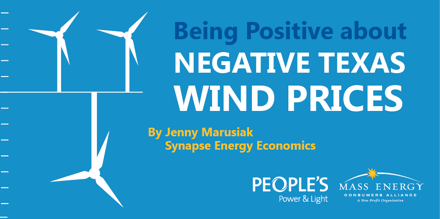Why we sent a Shave the Peak Alert for July 6
On July 5, we sent thousands of our followers a “Shave the Peak” alert because of the high forecasted peak...
Jenny Marusiak
Jul 10, 2023 4:10:00 PM
andSynapse Energy Economics
 In September, it was reported that wholesale electricity prices in Texas were negative during some evenings, largely a result of high wind production. Wind makes up a higher percentage of Texas’ energy mix than in New England, but we want to see more wind here. So what does it mean that there were negative electricity prices? To get a good answer, we asked our expert friends at the Cambridge-based
In September, it was reported that wholesale electricity prices in Texas were negative during some evenings, largely a result of high wind production. Wind makes up a higher percentage of Texas’ energy mix than in New England, but we want to see more wind here. So what does it mean that there were negative electricity prices? To get a good answer, we asked our expert friends at the Cambridge-based 

Comments